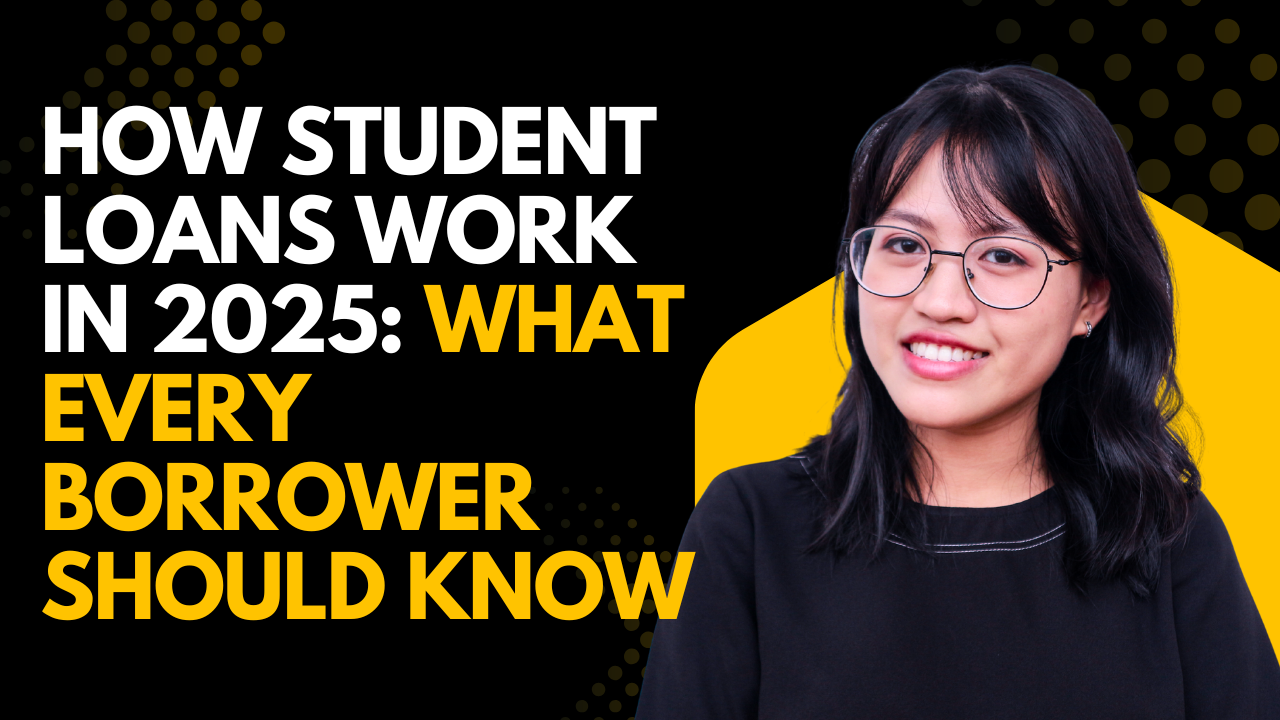Paying for college has never been simple, and in 2025, student loans remain one of the most common ways to finance higher education. However, with recent policy changes, evolving repayment plans, and rising education costs, it’s crucial to understand how student loans work in 2025 before borrowing.
This guide breaks down everything first-time borrowers and current students need to know—including the different types of student loans, how interest accrues, repayment plans, and strategies to avoid long-term debt.
Types of Student Loans in 2025
Student loans fall into two broad categories: federal loans and private loans. Each has its own structure, requirements, and repayment options.
1. Federal Student Loans
These are funded by the U.S. Department of Education and remain the most borrower-friendly option due to fixed interest rates, income-based repayment plans, and forgiveness programs.
Common Types:
-
Direct Subsidized Loans: For undergraduate students with financial need. Interest is paid by the government while in school.
-
Direct Unsubsidized Loans: Available to undergraduate and graduate students. Interest accrues during school.
-
Direct PLUS Loans: For graduate students and parents of undergrads. Higher interest rates and credit checks apply.
-
Direct Consolidation Loans: Combine multiple federal loans into one with a single monthly payment.
Key 2025 Updates:
-
Simplified FAFSA process and quicker approval
-
Expanded access to SAVE Plan (new income-driven repayment option)
-
Renewed efforts for student loan forgiveness in certain public service careers
2. Private Student Loans
These loans are offered by banks, credit unions, and online lenders. They are based on credit history and typically lack the flexible repayment terms found with federal loans.
Key Features:
-
Variable or fixed interest rates
-
Often require a co-signer
-
Limited forbearance or forgiveness options
-
Useful for bridging gaps when federal loans aren’t enough
How Interest Works in 2025
Understanding interest is critical when borrowing.
-
Federal Loans: Fixed rates set annually by Congress. Subsidized loans don’t accrue interest while you’re enrolled at least half-time.
-
Private Loans: Rates vary by lender and depend on credit score, co-signer creditworthiness, and market conditions.
2025 Average Interest Rates (Estimates):
| Loan Type | Interest Rate (APR) |
|---|---|
| Federal Subsidized | 5.25% |
| Federal Unsubsidized | 6.00% |
| PLUS Loans | 7.50% |
| Private Loans | 5.99% – 13.99% |
Student Loan Repayment in 2025
Repayment begins after graduation or when you drop below half-time enrollment. Federal loans typically include a 6-month grace period. Here’s what repayment looks like today:
Federal Repayment Plans
-
Standard Plan: Fixed monthly payments for 10 years
-
Graduated Plan: Payments start low and increase every two years
-
Income-Driven Repayment (IDR): Payments based on income and family size
-
SAVE Plan (introduced in 2023) is the most generous IDR option yet
-
-
Public Service Loan Forgiveness (PSLF): Forgives remaining balance after 10 years of qualifying payments in eligible public service roles
Private Repayment Plans
-
Less flexible
-
Some lenders offer interest-only or deferred payments during school
-
No forgiveness programs
-
May allow refinancing for better terms
Student Loan Forgiveness and Relief Programs in 2025
Student loan forgiveness remains a hot topic. While large-scale cancellation is uncertain, some targeted programs continue:
-
PSLF for public employees and nonprofit workers
-
Teacher Loan Forgiveness
-
Income-driven plan forgiveness after 20–25 years of payments
-
Biden-Harris Administration’s proposed expansions are still under review
Important: Always verify eligibility and apply directly through studentaid.gov.
Tips for Borrowing Smart in 2025
-
Max out federal loans before considering private ones
-
Understand interest capitalization—it can increase your balance significantly
-
Only borrow what you need
-
Start paying interest while in school if possible
-
Explore scholarships and grants first
-
Compare repayment terms across lenders if considering private loans
Loan Calculator: Know Your Future Payments
Before borrowing, use a student loan repayment calculator to estimate monthly payments based on amount, interest rate, and repayment term. Knowing your future obligations can help avoid debt shock after graduation.
FAQs About Student Loans in 2025
Q: Can I apply for both federal and private student loans?
A: Yes. You should always exhaust federal options first, then consider private loans to cover any remaining costs.
Q: Will my student loans be forgiven in 2025?
A: Some targeted forgiveness programs exist, but large-scale forgiveness is not guaranteed. Follow updates from the Department of Education.
Q: Can I refinance federal student loans with a private lender?
A: Yes, but you’ll lose access to federal protections like IDR plans and forgiveness.
Conclusion: Know Before You Owe
Understanding how student loans work in 2025 can mean the difference between manageable debt and long-term financial stress. With careful planning, federal aid awareness, and strategic borrowing, you can fund your education without compromising your financial future.
Whether you’re applying for the first time or navigating repayment, always stay informed—and never hesitate to ask questions or consult a financial advisor.
